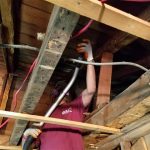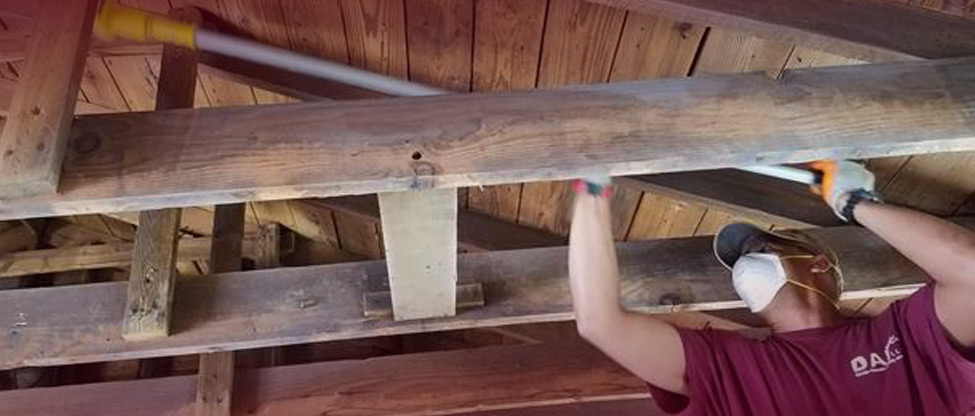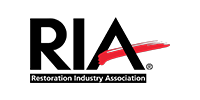
DAI is ready
to help you
Fire & Smoke

FIRE & SMOKE DAMAGE RESTORATION
Fire and Smoke damage to property and the restoration it involves can be both devastating and overwhelming to those affected. Whether you have experienced a small kitchen cooking fire or an uncontrollable blaze, immediate action needs to be taken as any delay in response can result in further loss or damage to the structure and contents of the property. DAI Restore’s certified staff of technicians and project managers are to assist in every way possible.
- Damage and Documentation Assessment
- Securing the Property and Removing Debris
- Drying, Mitigation and Demolition
- Detailed Cleaning and Deodorization
- Reconstruction
Fire & Smoke can cause an immense amount of damage. Due to How a fire must be extinguished, smoke/fire damage usually comes with a heavy media detailed cleaning with odorizing solutions or water damage is involved as well and will inquire mitigation services as well.
That’s why DAI Restore is always ready with the essential tools and experience needed to help restore your home. Call us now!

The Process
A licensed authority must sanction that the structure is stable enough to allow access prior to starting restoration. Any removal of building materials or contents from the property will only be completed once the town officials and insurance company clear the scene.
Our team will complete a walk-through inspection of the property to assess the damage that has been sustained during the fire, as well as any water damage incurred from extinguishing the fire, or from possible burst pipes.
- Assess the entire structure to gauge fire destruction and smoke penetration.
- Record all documentation related to the extensiveness of required cleaning.
- Implement a plan of action once the assessment is complete
Once the assessment is complete, the property needs to be secured. This may involve fencing or partitioning to be placed around the perimeter of the property, tarping portions of the roof, and boarding-up any broken windows or openings in the structure.
If only a portion of the property is affected, containment will be erected around the affected areas to stop cross-contamination of unaffected areas and isolate clean rooms once the cleaning process is done in that affected area.
Any exterior debris and non-restorable interior debris will be immediately removed and disposed of. Salvageable personal contents are packed-out for transportation back to the facility for detailed cleaning and an assessment for further damage.
Air Filtration Devices with H.E.P.A filters will be installed throughout the house to assist with fumes, odors, and control particulates that will be released during the mitigation process.
Any water left inside the structure will be extracted, followed by controlled demolition of all questionable or non-salvageable building material. See DAI Restore’s Water Mitigation page for a better understanding of the water damage cleanup process.
The cleaning procedure is the most intense and extensive step in the fire restoration process. In most cases, the entirety of the affected area (interior, exterior, and its contents) will need to be cleaned. There are numerous aspects to the cleaning process depending on the materials affected and finishes on these materials.
Structural cleaning involves the materials used to build the structure, and any items that are physically attached:
- Floor
- Wall assemblies
- Ceilings
- Others
For structural cleaning, the restoration technicians must be familiar with different paint and wood finishes (or lack thereof), plus the different cleaning methods and chemicals or solvents that will properly clean the materials to restore their pre-loss conditions.
Content cleaning is typically done off-site at our facility, after the pack-out inventory is completed. From there, the contents are cleaned manually or with specialty equipment like an ultrasonic cleaning machine.
Preconditioning cleaning is for soot removal and is typically done using a HEPA vacuum with a soft-bristle attachment. Oxidizing agents such as Ozone or Hydroxyls may need to be used to treat odors within the air.
Once all cleaning and deodorization has been completed, the replacing and finishing/painting of wall and flooring materials is done. Fixtures, counters and cabinets are replaced. If necessary, plumbing, electrical and structural repairs or rebuilds will be completed, also.
Fire & Smoke FAQ's
Depending on the severity of the damage, the restoration process could take weeks or even months to complete. DAI Restore will be there for you every step of the way.
Removing personal contents and charred materials helps in odor-reduction before chemical deodorization is instituted. Some content may need to be further assessed to determine the type of cleaning protocol for that specific item.
This is a type of cleaning for soot removal, typically using a HEPA vacuum with a soft bristle. Any dry soil and soot removal on flat surfaces is done with a soot or chemical sponge. Soot that has been embedded into surfaces will need wet cleaning with a product that is either water-based, solvent-based, or abrasive. The type of cleaning used is dependent upon the pH of the cleaning product and target surface to be cleaned. Liquid deodorizers are applied using equipment that will create a spray, mist, or fog of the chemical to cover a wide range of surfaces.










